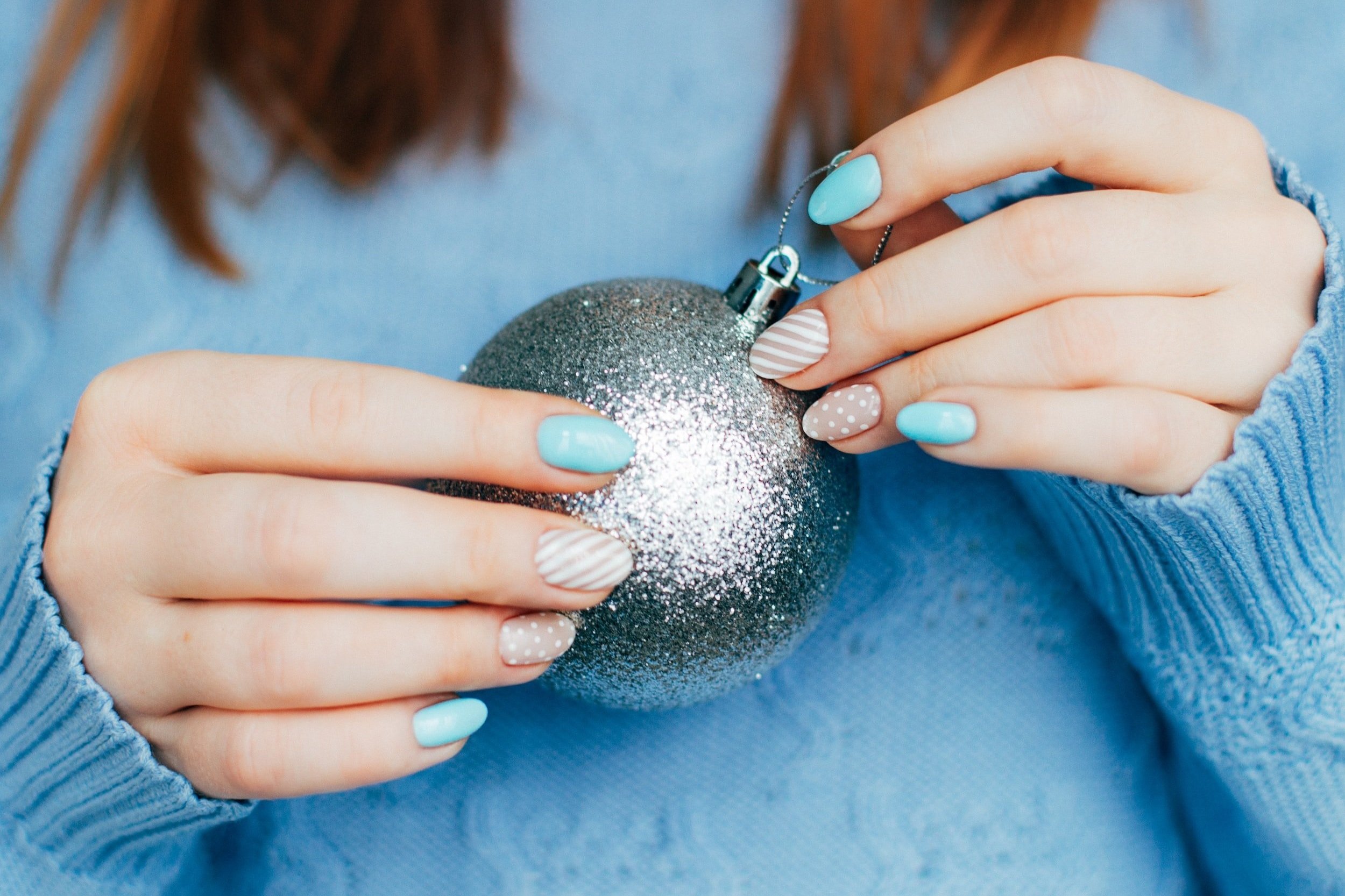OPINION: Are your holiday nails poisoning you? Science says yes. Here’s how to protect your lungs.
By Marielle Villar Martiney (EMPA ’23)
It’s that time of year for decking your nails with festive holiday and sparkly New Year's Eve designs, but are you also filling your lungs with toxic plastic dust at the nail salon? Chances are, unfortunately, yes. Exposure to plastic acrylic dust from nail salons is linked to lung irritation, as well as respiratory distress and illnesses.
I am one of 1.79 million New Yorkers with asthma. Even before COVID-19, I was acutely aware of every cough, irritant, and smoke cloud. I get my nails done about once a year, so I was shocked at the amount of plastic dust and chemicals that hit me the moment I walked into my neighborhood nail salon to get my bridal manicure the day before my wedding.
Because of my asthma, you can probably imagine my horror when I saw, immediately next to me, a nail technician turn on a high-speed electronic nail file to remove flamingo pink gels from a client.
As the metallic whirring touched the pink gel, a cloud puff appeared. This cloud consisted almost entirely of plastic particles, and I panicked after realizing my N95 mask, good for preventing infections, did not have an airtight fit.
I shrank away from the encroaching plastic dust and tried to hold my breath.
A friend of mine recommended getting a “powder manicure” to help my nails stay longer. I soon learned, again to my horror, that the dip powder nail application is precisely as described: the nail technician put an adhesive on my nails, dipped my fingers into a jar of colored plastic dust, and then blew the excess away. I was surrounded by colorful plastic dust billowing, drifting, and then diffusing into the air. No one else seemed to notice just how dangerous these plastic clouds can be.
Microscopic plastic pollution, also known as microplastics, is an emerging environmental crisis. This past year, researchers found microplastic in our lungs, blood, and placenta tissues.
We know that airborne plastic particles from nail salons are small enough to become lodged deep within our lung tissue, and that breathing in plastic can lead to lung irritation, respiratory diseases, and potentially cancer. But the wide-scale public impacts of microplastic pollution are still largely underfunded and unknown.
In 2015, the New York Times released a bombshell investigative report titled “Perfect Nails, Poisoned Workers.” The author, Sarah Maslin Nir, detailed how harmful nail salon chemicals increased the risk of cancer, miscarriages, and chronic pain for nail technicians. One interviewed technician, Hai Thi Le, detailed how “she breathed in so much acrylic powder that when she kissed her husband after work, he complained her breath smelled of solvent and plastic dust.”
Within a month of Ms. Nir’s report, New York state mandated all nail salons to post the “Bill of Rights for Nail Workers” in their establishments.
In 2020, the practice of using dip powder came under scrutiny in El Paso, Texas because unsanitary powder pots could spread a herpes virus that infects your fingers. However, there were no warnings about the public health dangers of the plastic powder itself.
Most recently, in 2022, researchers discovered that microplastic pollution in indoor air salons were primarily from acrylic fragments, putting nail technicians who worked with acrylic nails and dip powder at high risk of respiratory health issues.
Our blissful ignorance to microplastic poisoning might soon change as legislation catches up with this unregulated source of pollution in nail salons. Currently, New York State Senator Jessica Ramos and Assemblymember Harry Bronson have introduced the “first of its kind” Nail Minimum Standards Council Act. This legislation creates a commissioner to determine nail salon safety standards.
I got my nails done again during my honeymoon, but this time in Europe. There was no mechanical filing to remove my acrylic gels. There was no dip powder on the menu. European regulations ensured there were no puffs of plastic cloud for staff or clients to breathe.
Now, I am not a nail technician nor a frequent nail salon customer, so over the past few months I interviewed several nail aficionados, and one thing became clear: it is possible to have, in the words of the pending legislation, employment and earning power without breathing in plumes of plastic.
After speaking with an aspiring nail technician and labor organizer, I developed five policy suggestions for the eventual commissioner, should these bills be signed into legislation: 1) ensure proper air filtration throughout the salon to capture airborne microplastic particles, 2) implement machines to extract acrylic dust over workstations, 3) ban dip powder, 4) communicate ingredients to workers and customers, and 5) provide resources for salons, particularly immigrant-owned shops, to adopt safety standards.
And in the meantime, how can you keep yourself safe? First, wear a tight-fitting N95 or KN95 mask while getting your nails done to protect yourself. Wearing masks also helps normalize and de-stigmatize the safety practice of wearing masks for nail technicians in salons. Second, avoid using dip powders — yes, these manicures last the longest, but it also poses health hazards.
We have an immediate chance to protect nail salon workers, aficionados, and even once-a-year patrons like myself from entirely avoidable microplastic pollution and associated illnesses. I hope that policymakers quickly pass this legislation and enact these policy recommendations before more people, primarily women, are exposed to more poisonous plastic.
Marielle Villar Martiney (EMPA ’23) was formerly a director at Good Old Lower East Side, a housing justice non-profit, and is now studying environmental justice at Columbia University.

